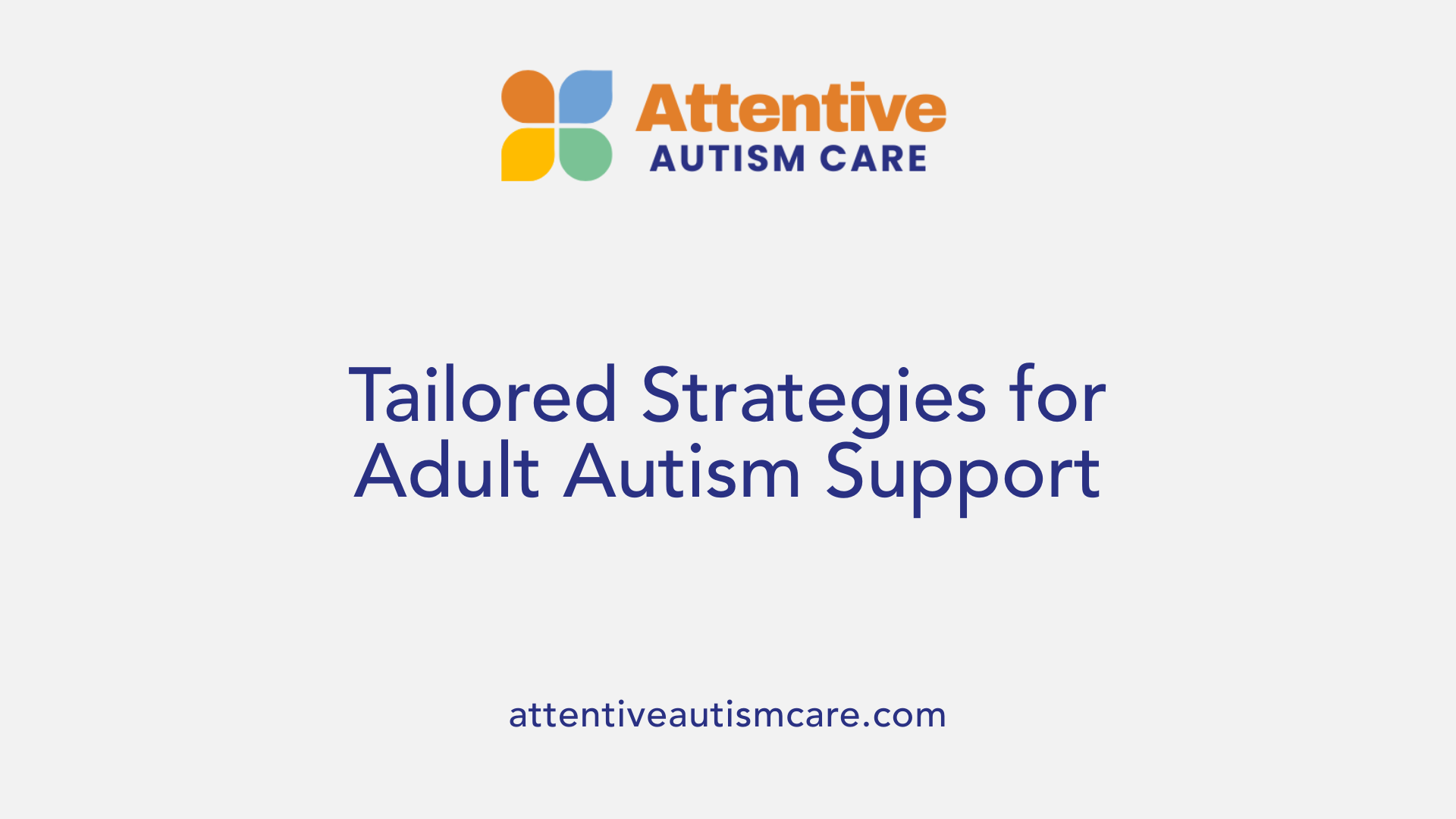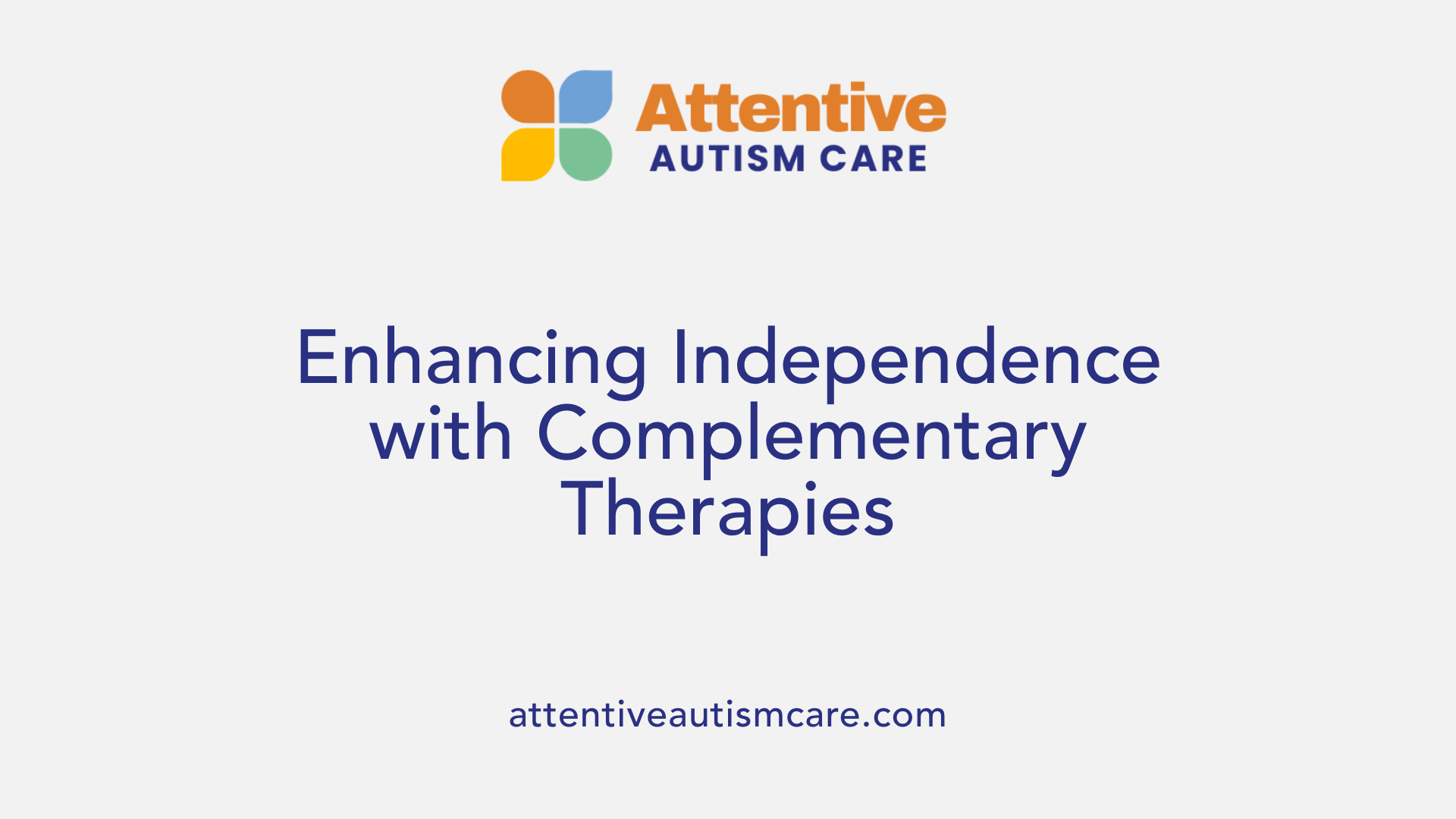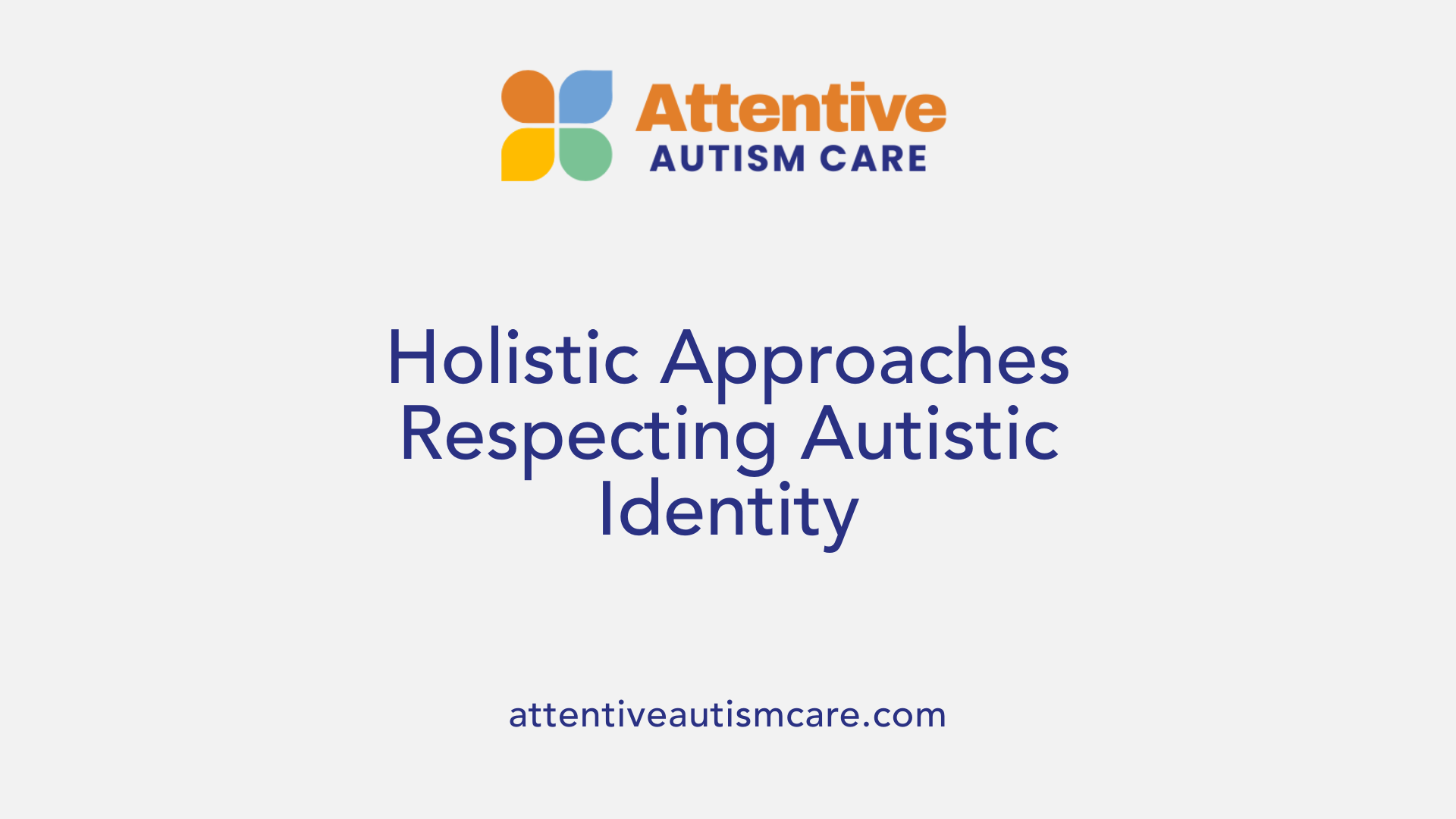Supporting Autistic Adults in Independent Living
Enhancing Independence: Proven Therapies Empower Autistic Adults

Understanding Support for Autistic Adults
Supporting autistic adults in achieving independent living requires a comprehensive approach that addresses diverse needs, including communication, social skills, emotional regulation, and daily living skills. Effective interventions draw upon behavioral, cognitive, and occupational therapies, tailored to each individual's unique strengths and challenges. This article explores evidence-based therapies and strategies that foster autonomy, well-being, and community integration for autistic adults.
Applied Behavior Analysis (ABA) Therapy: Foundations and Benefits

What is Applied Behavior Analysis (ABA) therapy and how does it benefit individuals with autism?
Applied Behavior Analysis (ABA) therapy is a scientifically validated approach grounded in behavioral science. It focuses on reinforcing positive behaviors and reducing interfering behaviors through well-established learning principles. This therapy is applicable across all ages and is specially tailored to meet the unique needs of each person with autism.
Definition and core principles of ABA
ABA therapy is based on clear behavioral principles such as positive reinforcement, systematic instruction, and data-driven decision-making. Techniques include breaking down complex tasks into manageable steps, using role-playing and video modeling to teach social skills, and employing consistent positive reinforcement to encourage desirable behaviors.
Tailoring ABA therapy to individual needs
A comprehensive individual assessment is fundamental in developing an effective ABA program. This process includes interviews, direct observation, standardized assessments, and functional behavior analysis. These steps ensure that interventions are personalized, measurable, and focused on real-life goals relevant to each individual’s circumstances and preferences.
Key benefits of ABA for autistic adults
For adults with autism, ABA emphasizes practical life skills such as managing daily routines, improving communication—including expressive and receptive language—and vocational training to support employment. Further benefits include enhancing social skills, increasing independence, and supporting emotional well-being by teaching stress management and coping strategies.
Role of evidence and data-driven approaches in ABA therapy
ABA therapy relies on ongoing data collection and assessment to monitor progress and refine interventions. This evidence-based framework ensures that therapy remains effective and responsive to changes in an individual’s needs. By focusing on measurable outcomes, ABA supports continuous improvement and maximizes functional independence.
In summary, ABA therapy offers a comprehensive, individualized, and evidence-supported approach to help autistic adults increase independence, improve communication, and enhance quality of life across various domains.
Who Provides ABA Therapy and How It Is Delivered
Who typically provides ABA therapy services?
ABA therapy is mainly delivered by professionals trained specifically in behavior analysis. The most qualified providers include Board Certified Behavior Analysts (BCBAs), who design and supervise individualized treatment plans based on thorough assessments. Registered Behavior Technicians (RBTs) and trained therapists often carry out the daily implementation of ABA interventions, working directly with individuals across home, school, or community environments.
Qualifications and certifications required
Providers of ABA therapy must have specialized education and credentials. BCBAs, for example, must complete graduate-level training, accrue supervised clinical hours, and pass a certification exam. RBTs also undergo specific training and competency assessment to provide hands-on therapy under supervision. These certifications ensure that therapists are knowledgeable in behavior analytic principles and ethical clinical practice.
Settings where ABA is implemented
ABA therapy can be delivered in diverse settings depending on the individual's needs and goals. Common settings include the family home, educational institutions, clinics, and community spaces. This flexibility enables therapy to focus on real-world skills, enhancing social, communication, and daily living abilities in natural environments.
Importance of choosing qualified providers
Selecting qualified ABA providers is crucial for effective and safe treatment. Families and individuals should verify provider credentials like BCBA certification, experience with adults or specific populations, and ability to develop customized treatment plans. Trained professionals ensure that therapy is evidence-based, respects the individual’s autonomy, and uses data-driven methods to promote meaningful progress.
ABA therapy involves systematic instruction, positive reinforcement, and ongoing data collection to support skill development. Engaging with credentialed and experienced providers helps guarantee therapy that is both ethical and effective.
Core Principles Underpinning ABA Therapy

What are the key principles behind ABA therapy?
Applied Behavior Analysis (ABA) therapy is grounded in a clear understanding of the behavior-environment relationship. This principle recognizes that behaviors are influenced by environmental factors, and by analyzing these factors systematically, therapists can identify what triggers and maintains behaviors.
Positive reinforcement strategies are central to ABA. They involve rewarding desired behaviors to encourage their recurrence. This technique helps shape and increase socially valuable skills by providing immediate and meaningful feedback to the individual.
A functional behavior assessment is conducted to understand the reasons behind a particular behavior. This process examines antecedents (what happens before), the behavior itself, and consequences (what happens after). Understanding these elements allows the formulation of targeted interventions.
Individualization of treatment plans is a hallmark of ABA therapy. Each program is customized based on comprehensive assessments that consider the unique needs, abilities, and goals of the person. Methods like task analysis break down complex skills into manageable steps, assisting learners in mastering new capabilities gradually.
Data-driven decision-making ensures interventions are effective and adapted as needed. Continuous collection and analysis of behavioral data guide therapists in modifying strategies to maximize positive outcomes.
Together, these principles form an evidence-based framework that helps individuals with autism improve social, communication, and daily living skills while reducing challenging behaviors through scientifically validated approaches.
Personalizing ABA Therapy for Adults with Autism

How is ABA therapy tailored to meet individual needs?
ABA therapy for adults with autism begins with a comprehensive assessment process. Qualified Board Certified Behavior Analysts (BCBAs) conduct detailed evaluations that include interviews, direct observations, standardized assessments, and functional behavior analysis. This thorough assessment helps identify each individual's strengths, challenges, interests, and specific goals.
Comprehensive assessment process
The assessment phase is crucial for understanding an adult’s unique profile. It involves gathering information from various sources, such as the individual, caregivers, and previous records. Observations are made in natural environments like home, work, or community settings to capture real-life behavior patterns. Functional behavior analysis helps pinpoint reasons behind challenging behaviors to develop effective interventions.
Goal setting based on strengths and needs
Personalized goals are established by focusing on enhancing communication, social skills, daily living skills, vocational skills, and self-regulation. These goals are measurable and designed around the adult’s capabilities and aspirations. For example, goals related to improving budgeting skills, hygiene routines, or employment tasks are tailored to each person's priorities.
Integration of preferences and natural contexts
ABA interventions respect the individual’s preferences and incorporate natural contexts to ensure relevance and motivation. Techniques such as role-playing, video modeling, and positive reinforcement are used within typical social or work settings. This approach promotes generalization of skills and fosters independence.
Ongoing progress monitoring and plan adjustment
ABA therapy includes continuous data collection to track progress objectively. Regular reviews allow therapists to adjust interventions as needed based on performance and any changes in the individual's life circumstances or goals. Collaboration with families and caregivers ensures consistency and supports sustained improvements.
In summary, personalizing ABA therapy involves an individualized assessment, goal setting tailored to needs and interests, embedding interventions in natural environments, and adaptable plans supported by ongoing evaluation. This method ensures that therapy remains relevant and effectively supports adults with autism in achieving meaningful life outcomes.
Addressing Common Criticisms and Evolving Practices in ABA
Are there any controversies or criticisms associated with ABA therapy?
Applied Behavior Analysis (ABA) therapy has faced various criticisms, primarily linked to its historical application and methodology. Initially, ABA was viewed as rigid and highly structured, which some argue could lead to emotional distress or burnout for autistic individuals. Traditional approaches sometimes focused heavily on suppressing behaviors considered undesirable, causing concerns about promoting masking and conformity that might undermine an individual’s authentic self and neurodiversity.
Critics have also pointed to early ABA practices involving punitive measures, although these are largely obsolete today. Despite these shifts, residual apprehension about the impact on autonomy and emotional well-being remains among some advocates and autistic communities.
How has ABA therapy evolved to address these concerns?
Modern ABA therapy emphasizes individualized, respectful treatment plans that honor the person's identity and preferences. Therapists incorporate naturalistic and play-based methods to create engaging, less stressful learning environments. These approaches focus on fostering meaningful skills—such as communication, daily living, and social interactions—while reducing challenging behaviors without compromising emotional health.
Furthermore, current ABA interventions prioritize positive reinforcement, data-driven adjustments, and community-based settings. This evolution reflects a growing commitment to balancing effective intervention with respect for neurodiversity and personal autonomy.
In summary, while concerns about ABA persist due to its historical context, contemporary practices have significantly adapted, seeking to be more humane, flexible, and supportive of the individual’s dignity and well-being.
Complementary Therapies Enhancing Independent Living Skills

Social Skills Training and Vocational Readiness
Social Skills Training (SST) is vital for helping autistic adults navigate social cues and interactions with greater confidence. It fosters independence in social situations and boosts prospects for future employment by improving interpersonal communication and social engagement.
Cognitive Behavioral Therapy for Anxiety and Emotional Regulation
Cognitive Behavioral Therapy (CBT) is notably effective for adolescents and young adults managing anxiety, obsessive behaviors, and emotional dysregulation. Through understanding and modifying thought patterns, CBT helps reduce social anxiety and emotional stress, promoting better mental health and daily functioning.
Occupational and Sensory Integration Therapy Benefits
Occupational Therapy (OT) supports growth in fine motor skills, sensory integration, and self-care routines, which are essential for daily independence. Complementing this, Sensory Integration Therapy uses personalized activities to address sensory processing challenges, thereby enhancing daily functioning and comfort in various environments.
Speech and Language Therapy and Communication Support
Speech and Language Therapy develops communication abilities through verbal and non-verbal methods, such as picture exchange systems (PECS) and speech-generating devices. These tools empower autistic individuals to express needs effectively and engage more fully with others.
Life Skills and Transitional Living Training
Preparing autistic young adults for independent living, Life Skills and Transitional Living Training focuses on practical skills like budgeting, meal planning, and job readiness. This targeted training simplifies the transition to autonomy and supports sustained community integration.
Promoting Holistic Well-being and Respecting Autistic Identity

Integrating Therapies with Respect for Dignity and Happiness
Support for autistic adults should always prioritize dignity, safety, happiness, and respect for their identity. Interventions work best when they are tailored to the individual's unique needs and preferences, ensuring that therapy empowers rather than restricts. Community-based and personalized approaches foster autonomy and genuine inclusion in daily life.
Addressing Co-occurring Mental Health Issues with CBT and Mindfulness
Many autistic adults experience anxiety, depression, and emotional dysregulation alongside autism. Cognitive Behavioral Therapy (CBT) and mindfulness-based interventions (MBI) have shown promising results in reducing anxiety and improving mood. Techniques such as mindfulness-based cognitive therapy (MBCT) and stress reduction (MBSR) promote emotional well-being, while online CBT programs increase accessibility to effective care.
Importance of Caregiver Involvement and Community-Based Interventions
Parent and caregiver training plays a critical role in reinforcing therapy progress at home. Support that extends into community settings ensures skills learned in therapy translate into real-world independence. Structured social skills training and employment support, recommended by NICE guidelines, help autistic adults thrive in social and vocational environments.
Ongoing Research Needs and Evidence-Based Practice
While some therapies like ABA, CBT, and mindfulness are supported by evidence, there remains a need for more rigorous, long-term research with larger sample sizes. Ongoing data collection and outcome monitoring are essential to refine interventions and maximize effectiveness while avoiding potential negative effects.
Role of Structured Supports Like Visual Schedules and Functional Communication Training
Structured supports such as visual schedules and social stories reduce anxiety by creating predictable environments. Functional Communication Training (FCT) provides alternative methods for communication, especially for non-verbal individuals, reducing frustration and challenging behaviors. These tools complement therapeutic interventions and enhance daily functioning.
| Support Element | Purpose | Description |
|---|---|---|
| Respect and Autonomy | Promote dignity and happiness | Personalized, community-based approaches that honor individual preferences and identity |
| CBT and Mindfulness | Manage co-occurring mental health issues | Address anxiety, depression, and emotional regulation with evidence-based psychosocial treatments |
| Caregiver and Community Involvement | Reinforce skills and promote inclusion | Training caregivers and providing social/employment supports to improve independence and quality of life |
| Research and Evidence-Based Practice | Improve and validate therapies | Calls for rigorous studies with continuous progress monitoring to ensure safe and effective care |
| Structured Supports | Reduce anxiety and support communication | Use of visual schedules, social stories, and alternative communication methods to aid daily living |
Empowering Autistic Adults Towards Independence
Support for autistic adults in achieving independent living is most effective when grounded in evidence-based therapies like ABA, complemented by cognitive, social, and occupational interventions. Personalization of these approaches, respect for neurodiversity, and ongoing collaboration between professionals, caregivers, and individuals foster not only skill development but also emotional well-being and autonomy. While challenges and controversies exist, evolving best practices continue to improve outcomes and quality of life. Continued research and increased access to qualified providers will be key in expanding opportunities that help autistic adults thrive confidently and independently.
References
- 10 Essential Behavioral Therapy Techniques for Autism ...
- Strategies and interventions
- ABA Therapy for Adults: Real-Life Growth and Support
- ABA Therapy for Adults: Benefits and What to Expect
- Psychosocial therapeutic approaches for high-functioning ...
- The Controversy Around ABA
- Is ABA therapy harmful? The controversy explained
- Debunking 7 Common Myths About ABA Therapy - GSEP Blog
- Applied Behavior Analysis (ABA)
- The Top 10 Reasons Children With Autism Deserve ABA



































































































